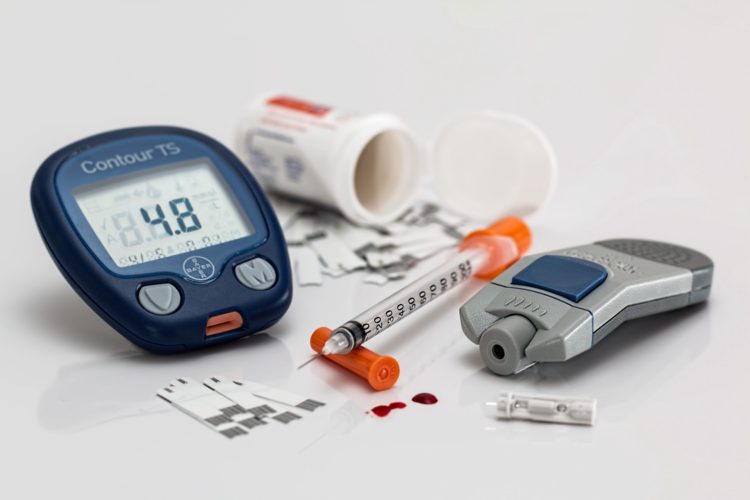Many believe the only role of insulin is to lower blood sugar. In truth, this is only one of insulin’s many physiological roles in human metabolism.
With the massive increase in Type II Diabetes and Metabolic Syndrome, insulin gets a pretty bad rap. So what’s the real deal? Is insulin good or bad?
WHAT IS INSULIN?
Insulin is an anabolic hormone used for growth and repair. Among the several important physiological roles is the storage of excess nutrients. Insulin is elevated anytime we consume energy substrates but it is especially elevated through the consumption of glucose, fructose and galactose.
Essentially, elevated blood sugar is a sign to our cells that we have more energy substrate available than we need in the present moment. Subsequently, insulin is released by the pancreas to take the sugar out of our blood and store it for future needs.
This was vital to us when we weren’t guaranteed a steady food supply. However, in an environment of excess caloric intake, processed foods, high carbohydrate consumption and deficient caloric expenditure, this genetic mechanism is harmful to our health and often times deadly.
EFFECTS OF SUSTAINED INSULIN
What are the effects of sustained, elevated insulin on immunity, cardiovascular disease, osteoporosis, thyroid regulation, cancer, aging, inflammation, mental health, sex hormones and the stress response?
All hormones in the body release from glands in a “pulse” or “wave.” This allows our cells to remain sensitive to their effects via only receiving small quantities at a time.
These hormones, including insulin, can be quite noxious to our cells in high or sustained quantities. So our cells are equipped to defend themselves by reducing the amount of receptors available to receive those hormones.
The Resistance
This is akin to loud or unwanted music causing you to cover your ears. Music is good to the ears but if it gets too loud or is heard at the wrong time it can be irritating. If the DJ wanted you to hear the music again they’d have to turn it up, you’d cover your ears more, they’d turn it up more, you’d cover more, etc.
Eventually, the function of your ears (CELLS) would change and the DJ (GLANDS) would become exhausted from trying to make the music (HORMONES) have the same effect.
This is essentially what happens in Type II Diabetes and Adrenal Fatigue. There are many people walking around with the symptoms of this process but who are not ACUTE enough to be diagnosed… eventually this builds into a CHRONIC degenerative condition.
THE HOW
Virtually all of us are exposed to processed, non-fibrous, high glycemic foods on a daily basis. We know this leads to rapid increases in blood sugar and corresponding rapid increases in insulin production.
Elevated insulin on a sustained basis eventually develops into insulin receptor resistance, which leads to even higher blood sugar and blood insulin levels, and subsequently more resistance.
Sadly, this insulin receptor resistance is a major factor in all of the chronic lifestyle diseases that now represent the leading causes of death in our society.
It’s not just those individuals with Diabetes. I’m talking about EVERYONE. Virtually ALL OF US fall into this category.
No one “JUST” wakes up and has diabetes. No one “JUST” wakes up and has heart disease, or osteoporosis, or multiple sclerosis or Alzheimer’s. These conditions develop for years before a diagnosis. We are ALL susceptible.
Our genes are simply not equipped to deal with these types of foods and the sedentary living that leads to “The Resistance.”
WHAT TO DO ABOUT IT
Believe it or not, this part is actually pretty darn straight forward and the blueprint is something we’ve repeated over and over again.
1. Eat real food.
Focus on protein with every meal, quality fat consumption, fibrous carbohydrates and if you’re activity level is high to very high and you’re not currently suffering from Type II Diabetes or do not have signs of faulty blood sugar regulation, add in starchy carbohydrates to support your caloric needs.
2. Exercise vigorously.
Although walking is a wonderful first step, it’s not enough. Be sure you are incorporating a training program with appropriately scaled strength training and conditioning.
3. Sleep.
One of the most overlooked factors in the normal regulation of all hormones, including insulin, is rest.
4. Recovery.
Add in consistent recovery habits like Corrective Chiropractic, massage, and meditation that can play a positive role in normalizing the stress pathways in your body.
Problems with insulin regulation? What else have you tried that helped solve your problem?
 Dr. Michael Gibson has committed himself to helping others to live the best life possible. After graduating with a Bachelor of Kinesiology from the University of Western Ontario, he received his Doctor of Chiropractic Degree and Masters of Science in Chiropractic Sports Science from Life University. He is the co-creator of Life By Design, owner of The Wellness Group, and co-owner of CrossFit 613. His passion for empowering families runs deep. After experiencing the loss of his sister due to illness, Michael’s purpose became reaching and teaching as many as possible the foundational principles of an extraordinary life. Since that time he has passionately pursued and been successful in living out his dream. He maintains a busy family chiropractic practice, a full speaking schedule and finds time to implement the principles and practices of Life By Design in his own life.
Dr. Michael Gibson has committed himself to helping others to live the best life possible. After graduating with a Bachelor of Kinesiology from the University of Western Ontario, he received his Doctor of Chiropractic Degree and Masters of Science in Chiropractic Sports Science from Life University. He is the co-creator of Life By Design, owner of The Wellness Group, and co-owner of CrossFit 613. His passion for empowering families runs deep. After experiencing the loss of his sister due to illness, Michael’s purpose became reaching and teaching as many as possible the foundational principles of an extraordinary life. Since that time he has passionately pursued and been successful in living out his dream. He maintains a busy family chiropractic practice, a full speaking schedule and finds time to implement the principles and practices of Life By Design in his own life.
